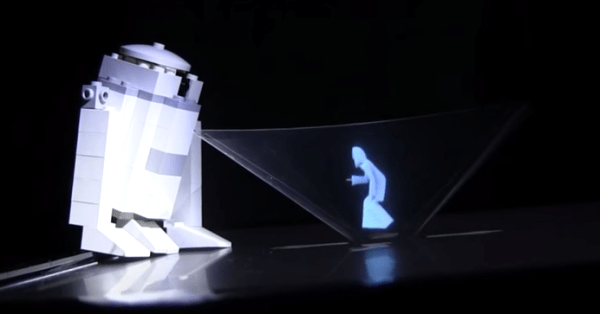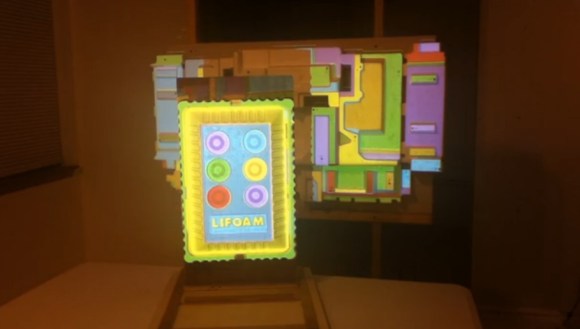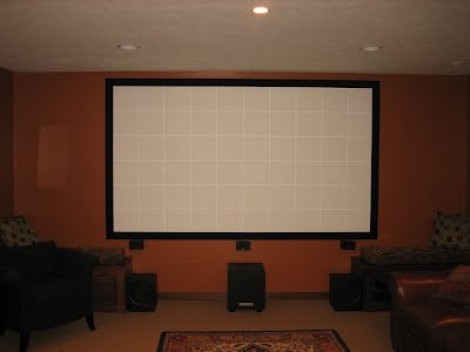Mirror galvanometers were originally developed in the 17th century to precisely measure very small changes in current. Unlike other instruments of the day, a mirror galvanometer could clearly show minute current variations by translating tiny movements of the mirror into large movements of the light reflected off of the mirror. Before clean electrical amplification became possible, this was the best means of measuring tiny differences in current. True mirror galvanometers are very sensitive instruments, but hobby servos can be used as a low-fidelity alternative, like with this project on Hackaday.io created by [robives].
Using a mirror galvanometer is by far the most common technique for laser projection shows – it’s really the only way to move the laser’s beam quickly enough to create the visual illusion of a solid line in real time. A mirror galvanometer works by using coils to attract magnets attached to the mirror, allowing the angle of the mirror to change when current is applied to the coils. This movement is extremely small, but is amplified by the distance to the projection surface, meaning the laser’s beam can move huge distances in an instance. If you’ve ever seen a laser show, it almost certainly used this technique. But driving galvos requires a beefy DAC, so we can’t blame [robives] for wanting to keep it digital.
[robives’s] project side-steps the need for galvanometers by using glow-in-the-dark vinyl and a UV laser. The result is a laser beam trail which lasts much longer, which means that solid lines are visible without the need for high-speed galvos. A build like this lets you experiment with laser projections without dealing with sensitive mirror galvos, and instead use components that you probably already have sitting on your workbench.
Continue reading “UV Laser Projector Shines With Glow-in-the-Dark Vinyl”

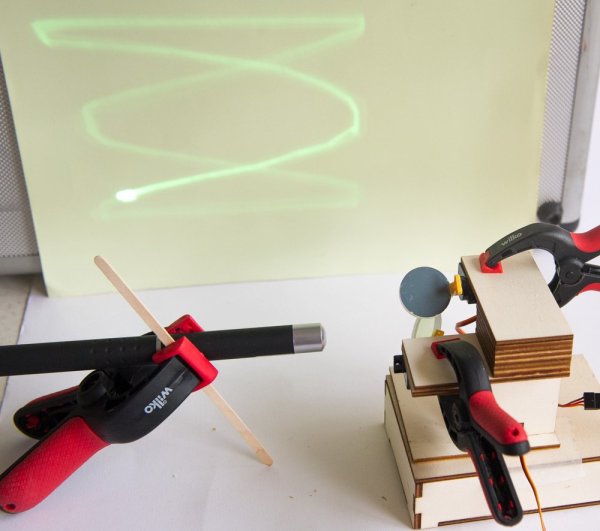
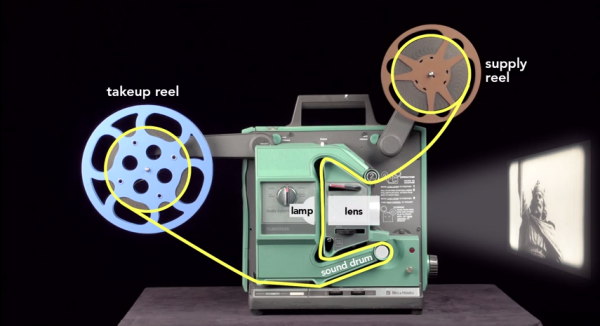
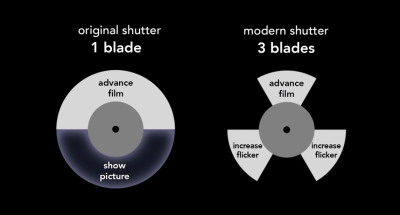 Film is projected at a rate of 24 frames per second, which is sufficient to create the POV illusion. A projector’s shutter inserts itself between the lamp and the lens, blocking the light to prevent projection of the film’s physical movement. But these short periods of darkness, or flicker, present a problem. Originally, shutters were made in the shape of a semi-circle, so they block the light half of the time. Someone figured out that increasing the flicker rate to 60-70 times per second would have the effect of constant brightness. And so the modern shutter has three blades: one blocks projection of the film’s movement, and the other two simply increase flicker.
Film is projected at a rate of 24 frames per second, which is sufficient to create the POV illusion. A projector’s shutter inserts itself between the lamp and the lens, blocking the light to prevent projection of the film’s physical movement. But these short periods of darkness, or flicker, present a problem. Originally, shutters were made in the shape of a semi-circle, so they block the light half of the time. Someone figured out that increasing the flicker rate to 60-70 times per second would have the effect of constant brightness. And so the modern shutter has three blades: one blocks projection of the film’s movement, and the other two simply increase flicker.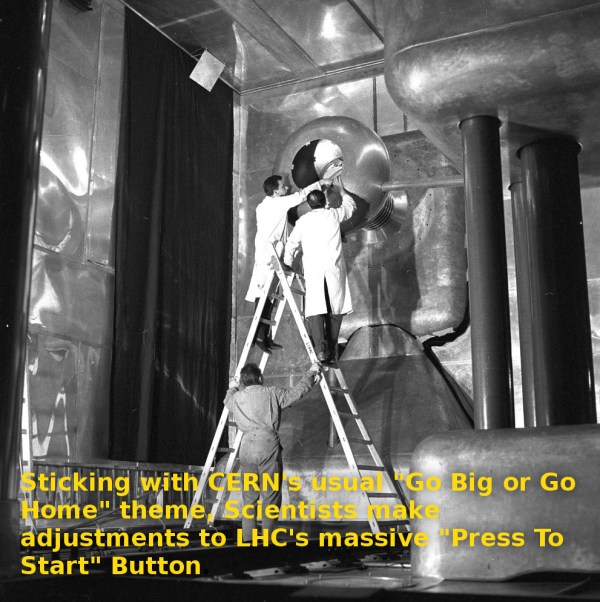
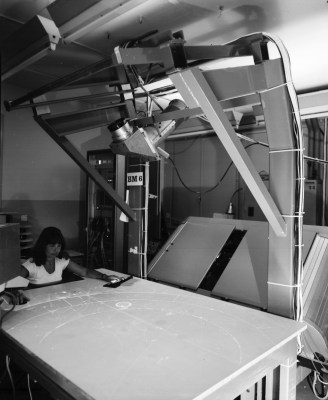 RN is no stranger to innovative display systems. That should be no surprise, considering CERN staff are trying to work with massive amounts of data collected by thousands of scientists. Here we see one of those systems, a projection table of some sort.
RN is no stranger to innovative display systems. That should be no surprise, considering CERN staff are trying to work with massive amounts of data collected by thousands of scientists. Here we see one of those systems, a projection table of some sort.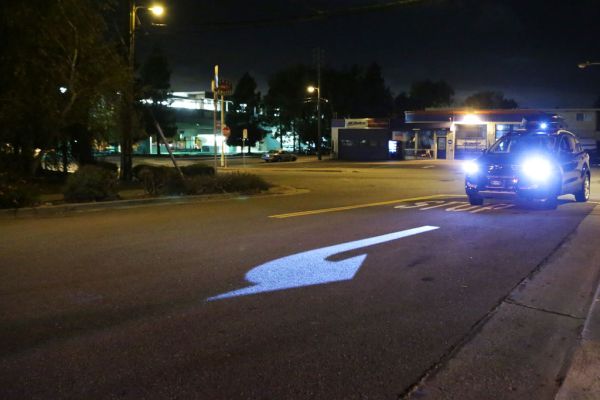
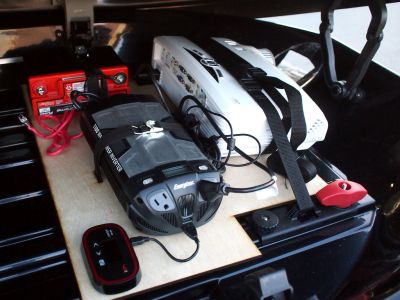 The projector itself is the HD25-LV, a 3500 Lumen model from Optima. the HD25-LV is capable of 1080p, though in this situation, brightness is much more important than resolution. [Mikeasaurus] mounted the projector along with a gel cell battery and 900 watt DC to AC inverter to power it. A mobile WiFi hotspot fills out the rooftop kit. Leaving an expensive setup like that on top of a car is a recipe for disaster – be it from rain, rocks, or theft. [Mikeasaurus] thought ahead and strapped his setup down inside a roof mounted cargo box. A plastic covered hole in the front of the box allows the projector to shoot down on the road while protecting its lens. We’d want to add a vent and fan to ensure that projector gets a bit of airflow as well.
The projector itself is the HD25-LV, a 3500 Lumen model from Optima. the HD25-LV is capable of 1080p, though in this situation, brightness is much more important than resolution. [Mikeasaurus] mounted the projector along with a gel cell battery and 900 watt DC to AC inverter to power it. A mobile WiFi hotspot fills out the rooftop kit. Leaving an expensive setup like that on top of a car is a recipe for disaster – be it from rain, rocks, or theft. [Mikeasaurus] thought ahead and strapped his setup down inside a roof mounted cargo box. A plastic covered hole in the front of the box allows the projector to shoot down on the road while protecting its lens. We’d want to add a vent and fan to ensure that projector gets a bit of airflow as well.